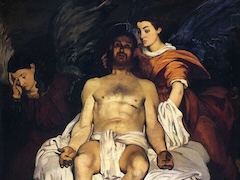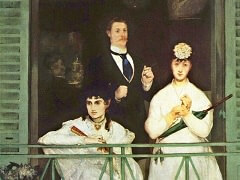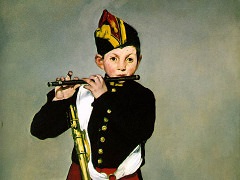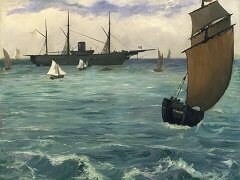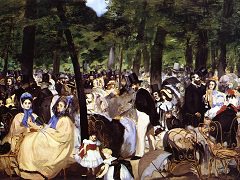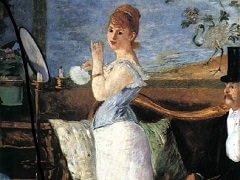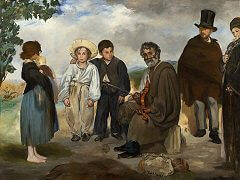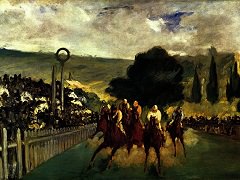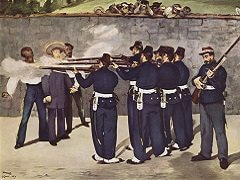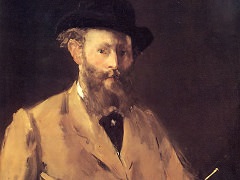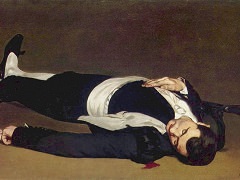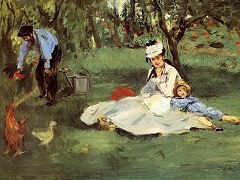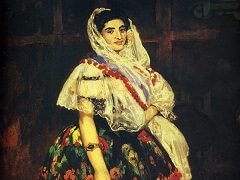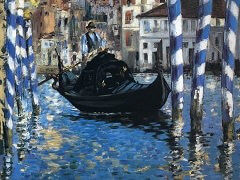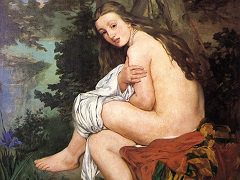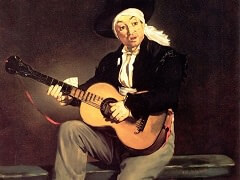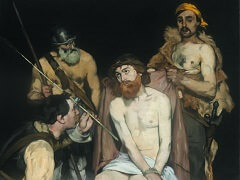A Bar at the Folies-Bergere, 1882 by Édouard Manet
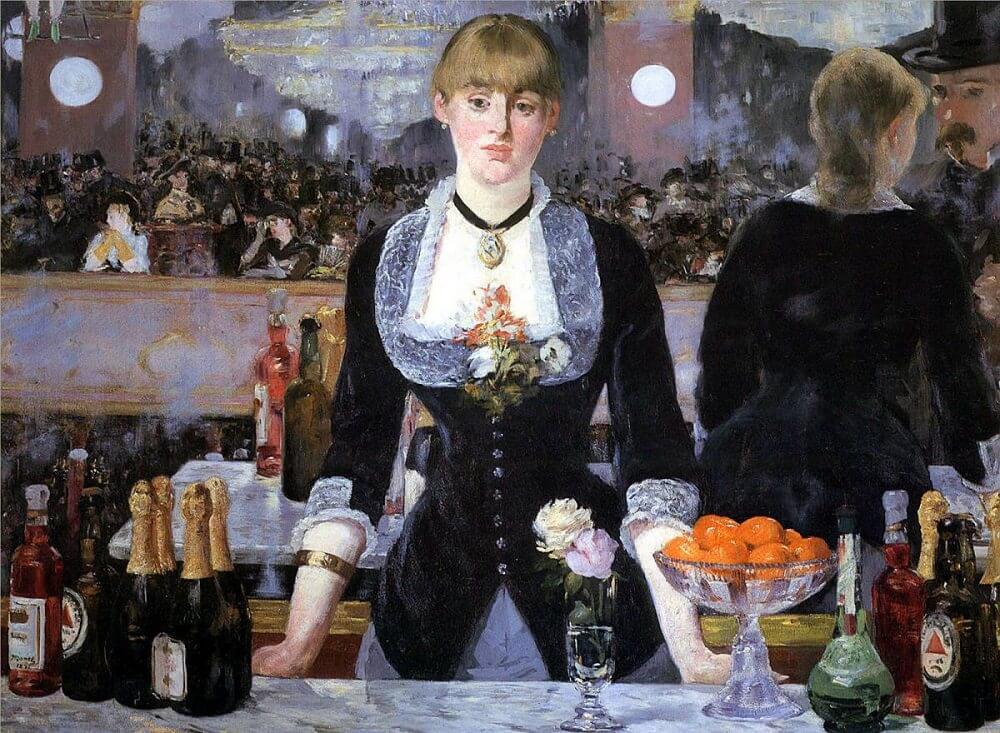
A Bar at the Folies-Bergere was presented by Manet at the 1882 Paris Salon exhibition, just one year before his death. The painting is the culmination of his interest in scenes of urban leisure and spectacle, a subject that he had developed in dialogue with Impressionism over the previous decade. The painting is a masterpiece that has perplexed and inspired artists and scholars since it was painted over 100 years ago.
The Folies-Bergere was one of the most elaborate variety-show venues in Paris, showcasing entertainment ranging from ballets to circus acts. Another attraction was the barmaids, who were assumed by many contemporary observers to be available as clandestine prostitutes. By depicting one of these women and her male customer on an imposing scale, Manet brazenly introduced a morally suspect, contemporary subject into the realm of high art. By treating the topic with deadpan seriousness and painterly brilliance, Manet staked his claim to be remembered as the heroic "painter of modern life" envisaged by critics like Charles Baudelaire.
In addition to the social tensions evoked by the painting's subject, Manet's composition presents a visual puzzle. The barmaid looks directly at the viewer, while the mirror behind her reflects the large hall and patrons of the Folies-Bergere. Manet seems to have painted the image from a viewpoint directly opposite the barmaid. Yet this viewpoint is contradicted by the reflection of the objects on the bar and the figures of the barmaid and a patron off to the right. Given such inconsistencies, Manet seems not to have offered a single, determinate position from which to confidently make sense of the whole.


